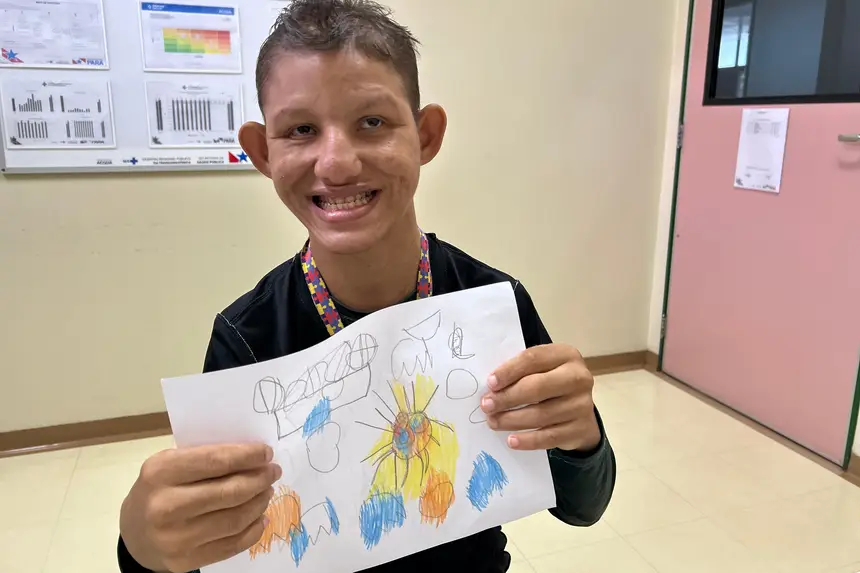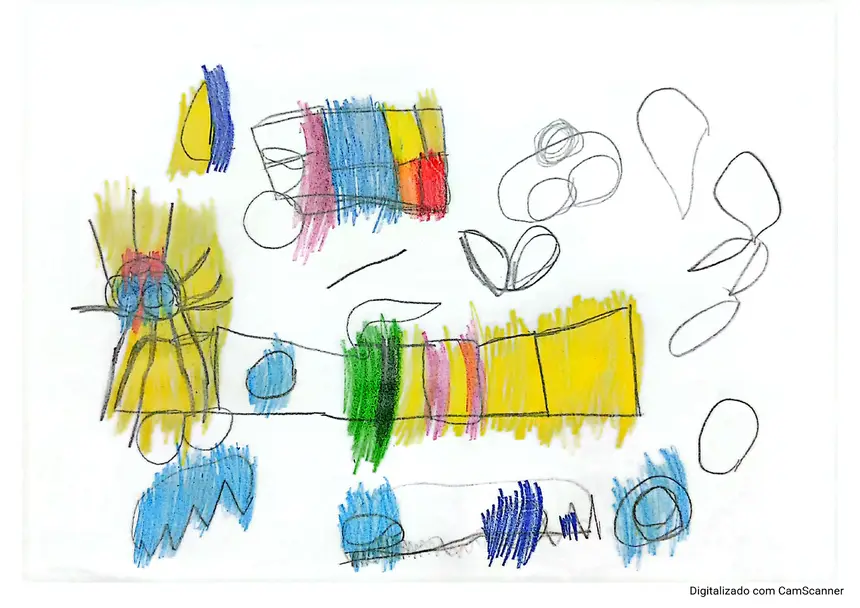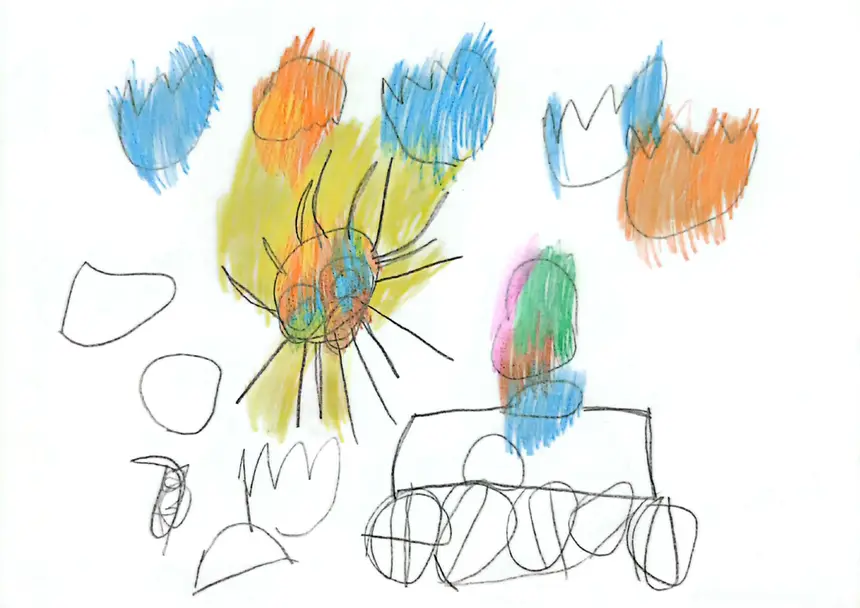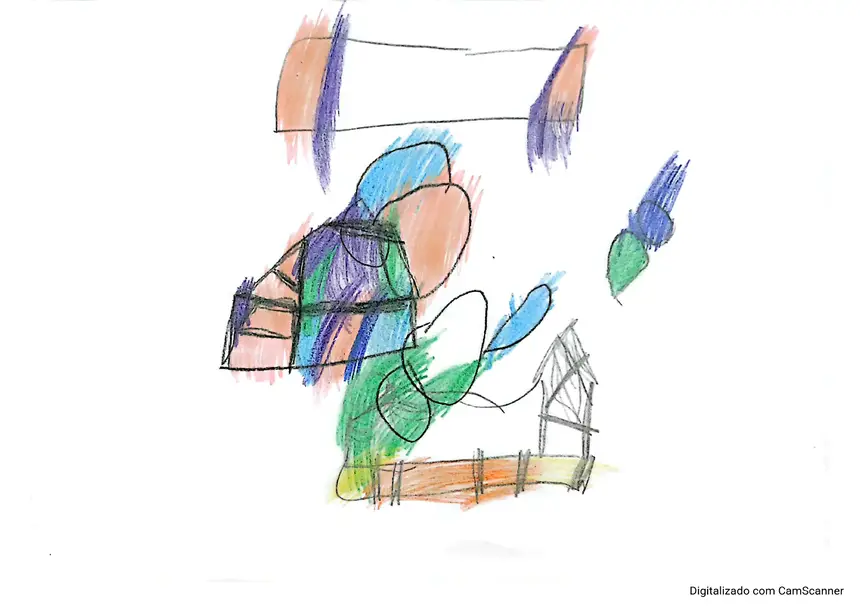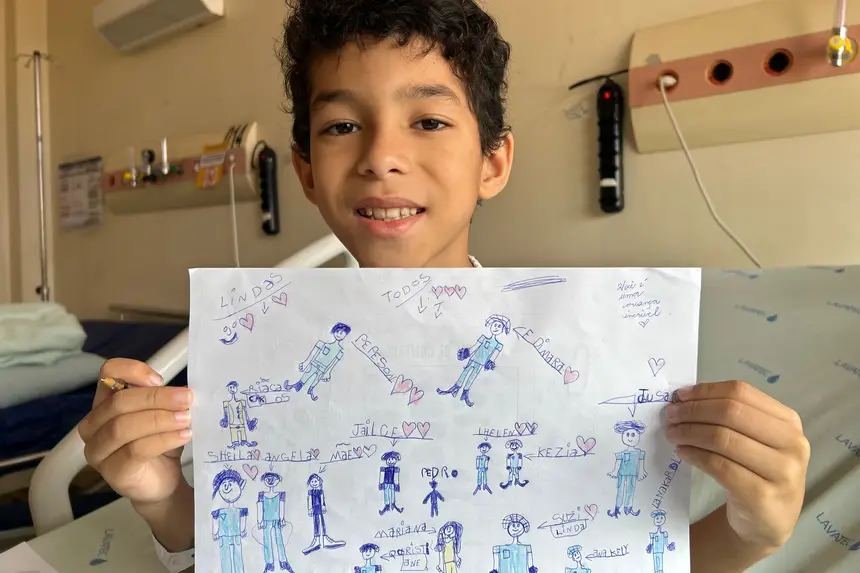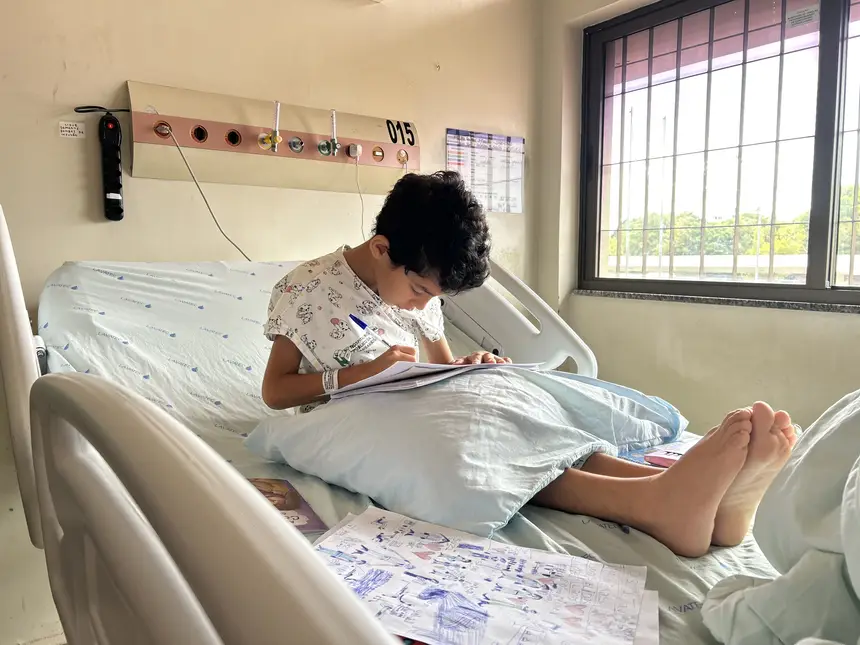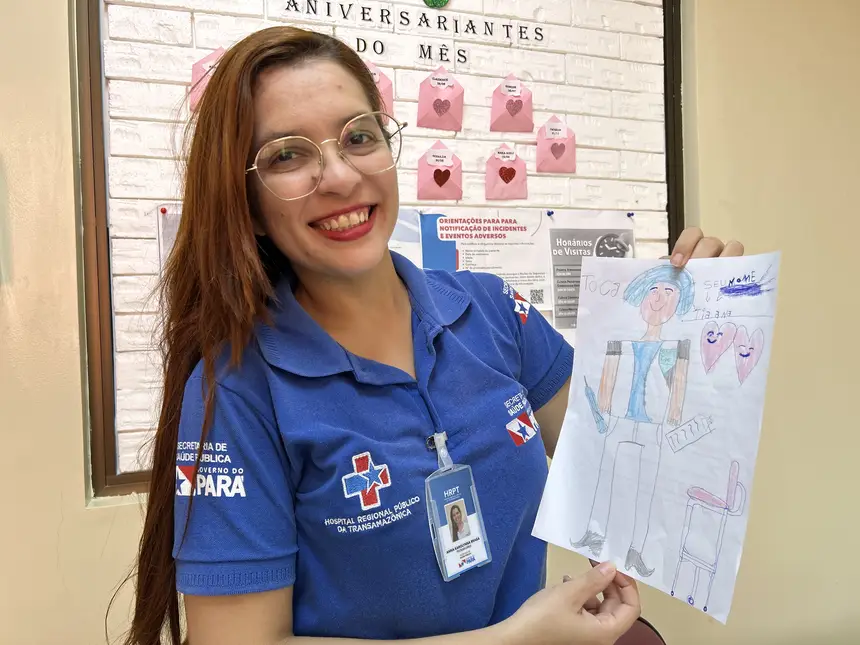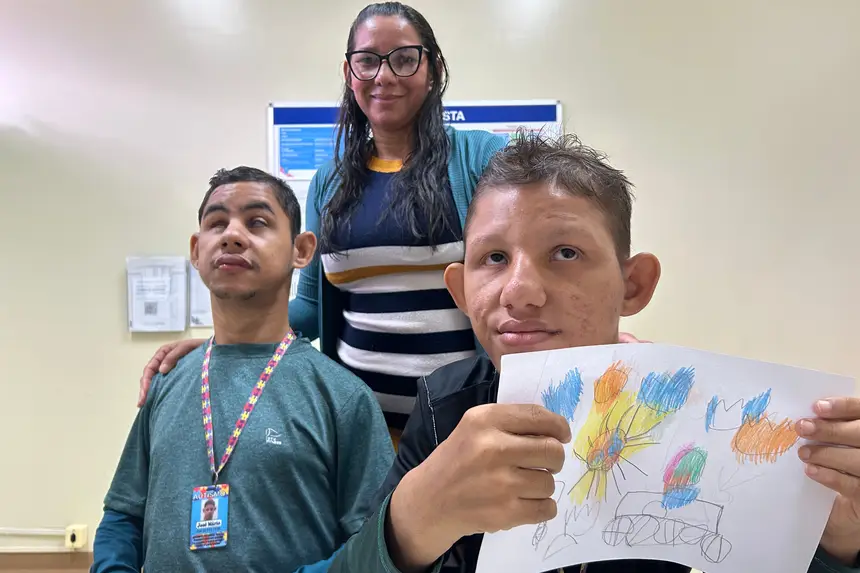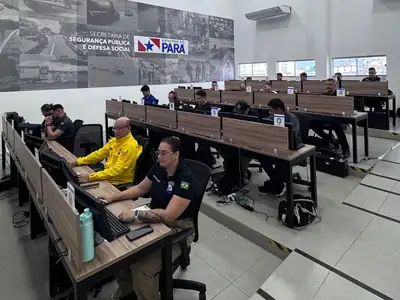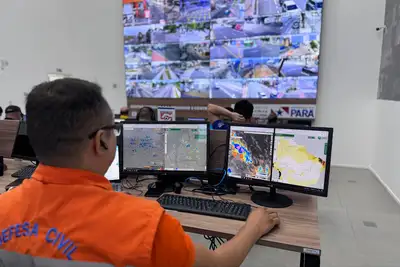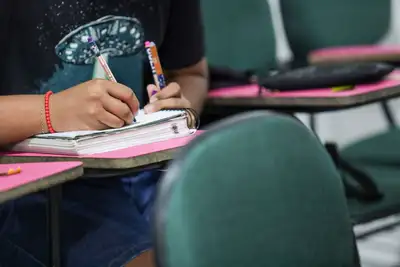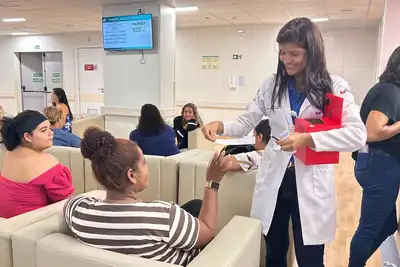How Art Therapy Works, a Method Applied by the Transamazon Hospital on Patients
Activity stimulates expression through paintings and drawings, and promotes well-being
For 49 days, the Public Regional Hospital of Transamazon (HRPT), in Altamira, southwest Pará, was a kind of studio for an artist that not even the closest person, his mother, knew. "He didn't draw anything. He only did his schoolwork, but he had never drawn before." The housewife Valdeni Silva dos Santos refers to her son, Allison Gabriel dos Santos Freitas. The 9-year-old boy spent almost two months hospitalized to treat pleural effusion, which is the accumulation of fluid between the lungs and the thoracic cavity, and infectious endocarditis, the name given to the inflammation of the layer that lines the heart.
"When asked by the psychologist what he would like to do as a pastime, he replied that he wanted paper and pencil," recalls his mother. The drawings reference the largest health unit in southwest Pará. Most of them depict the Pediatrics department, from where Allison was discharged on Monday, the 20th. Doctors, nurses, technicians, social workers, psychologists, and even the friends hospitalized with him became characters in the more than 20 drawings he created. "I'm going to take an artist son home," jokes the mother, Valdeni, who saved the works to show the boy's talent to family and friends.
The drawings should not be seen merely as sketches of a child. They have meaning and help to show the state of mind of the person who made them, as in Allison's case, who, before his discharge, confessed: "I liked the hospital, I thought it was a good place." Psychologist Anna Karolynna de Lima Braga explains that "drawing may seem like a simple activity, but it carries an incredible therapeutic power."
Art Therapy, the name of the method applied at the Public Hospital of Transamazon, is yet another humanization activity offered by the multidisciplinary team to patients and companions. "In Psychology, it helps to express feelings that we sometimes cannot put into words," evaluates Anna Karolynna, who was drawn on a whole sheet, complete with details, like the decorated pen that the psychologist carries during visits.
Art Therapy is also practiced by Fernando Bispo. The 20-year-old young man has autism spectrum disorder and has been receiving care at the Transamazon Hospital since 2017. As a patient with ASD, Fernando's case is peculiar because the drawings reproduce the world he created himself. The HRPT would be like the young man's home, where he expresses everything on paper, including the landscape that accompanies him to the hospital and the bus that transports him. "Here is the bus and this is the sun," details Fernando, showing the most recent drawing he made.
Silvânia Oliveira Bispo reports that, since the first contact with the HRPT teams, her son has been recording his weekly routine through sketches and paintings. "He asks to stay here with the girls [in the Ombudsman room, near the office] because he feels calmer." Besides the hospital environment and the teams that assist him, Fernando always includes his mother among the characters, usually represented by a heart. "This is gratifying for me," confesses Silvânia, who has another son with autism, José Mário, 29 years old, and lives exclusively to care for them.
One of the most praised aspects of the services available at the Transamazon Hospital is the range of activities that humanize the experience of patients and companions. For newborns and premature babies, there is the 'Kangaroo Method'; for mothers, there is handicraft; for those undergoing hemodialysis, crochet. Art Therapy can be developed by any user who feels comfortable. "A drawing is a form of communication, and we need to have sensitivity to analyze it," points out psychologist Fernanda Lago.
Regarding the records of her namesake, Fernando, the psychologist gives a practical example of how scribbles can say a lot about a patient. "He uses circles as a message of protection, trust, and security. It is also possible to observe that the colors have meaning. We identify that the colors used represent tranquility and hope because they are light, soft colors."
Since 2017, when he started being followed by HRPT, the young man has made more than 100 drawings, some of which are kept at the hospital, which plans an exhibition as a way to inspire other users to discover how art can also be liberating, even when hospitalized.
Text: Rômulo D’Castro – Ascom HRPT


